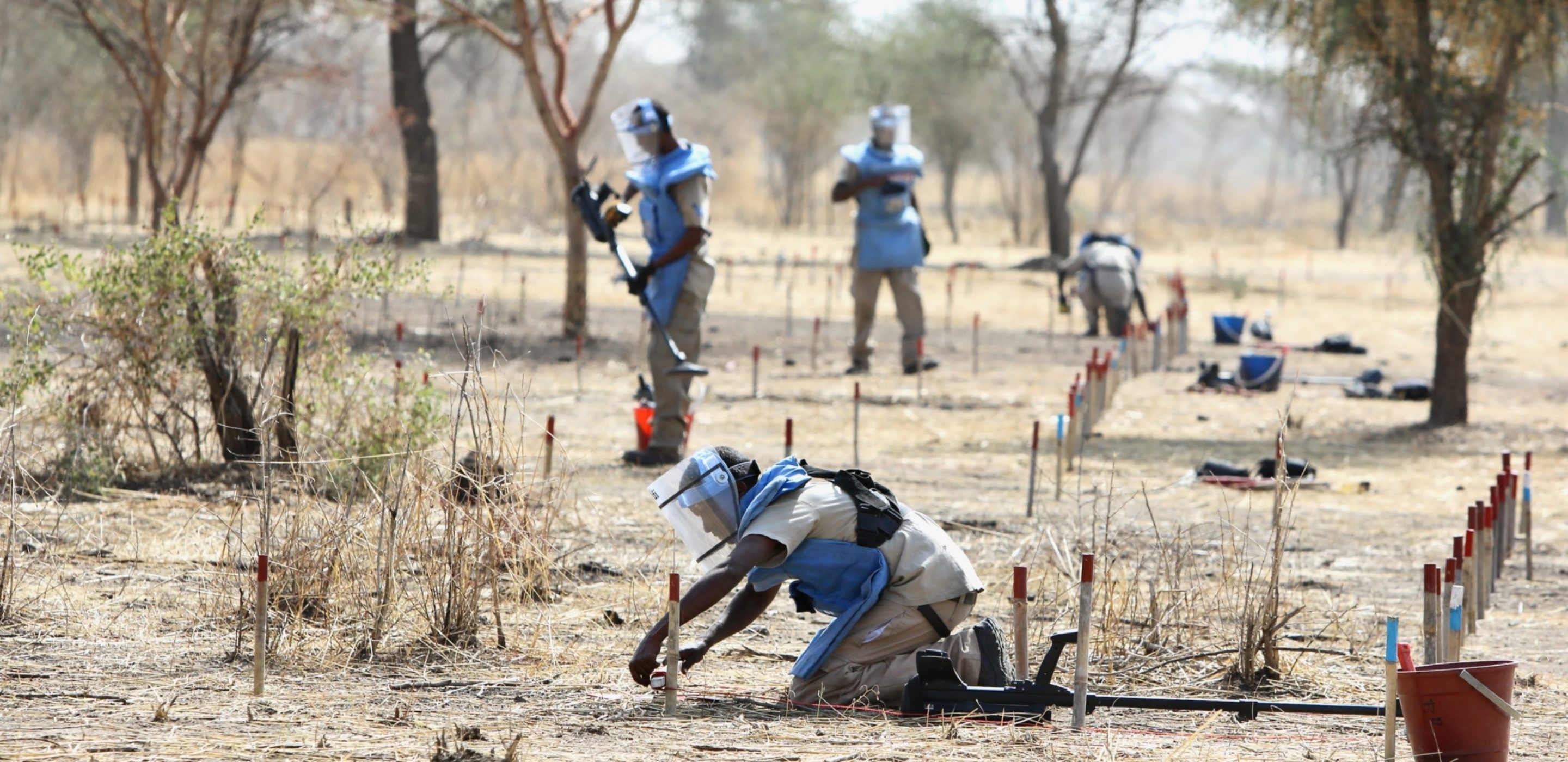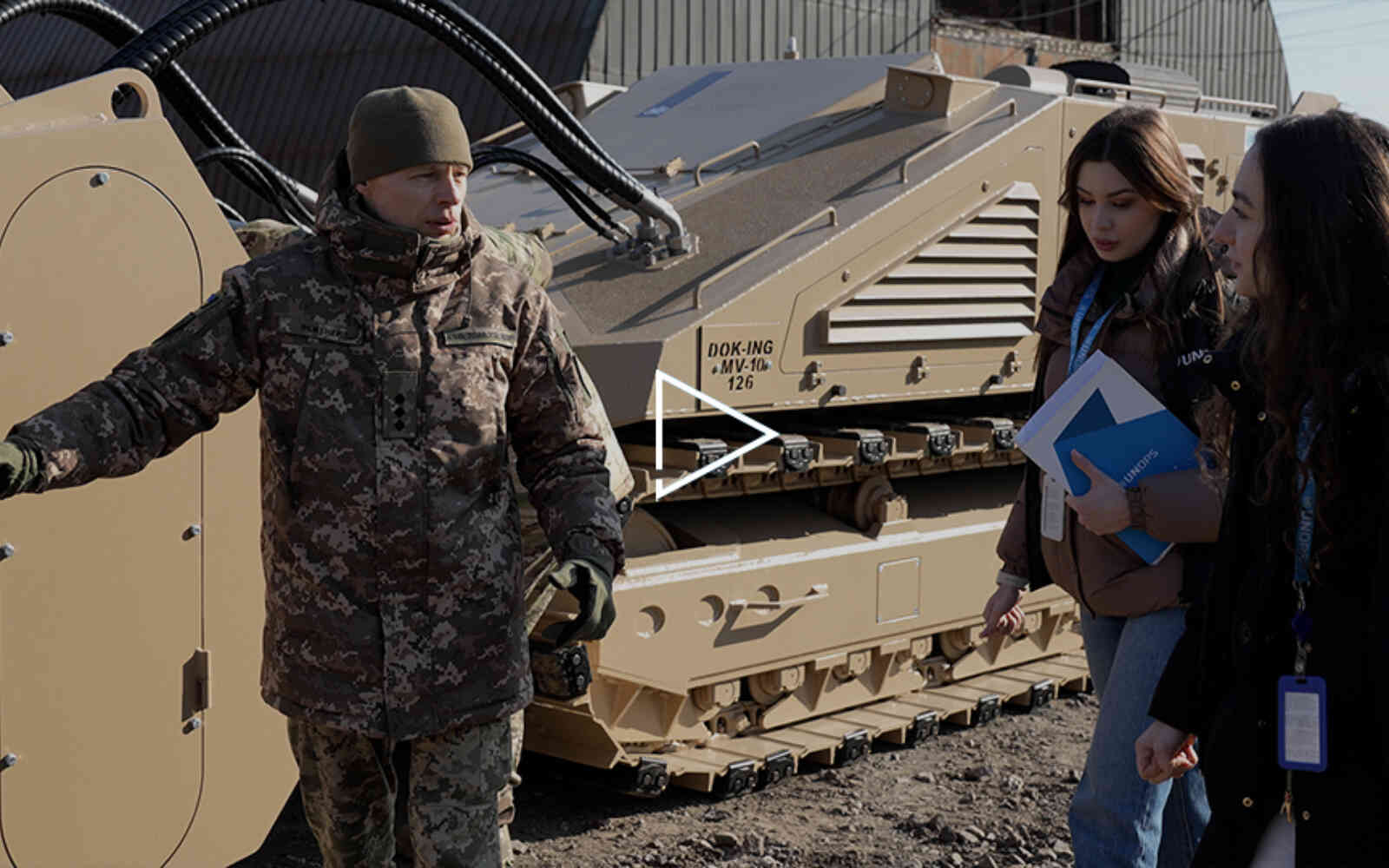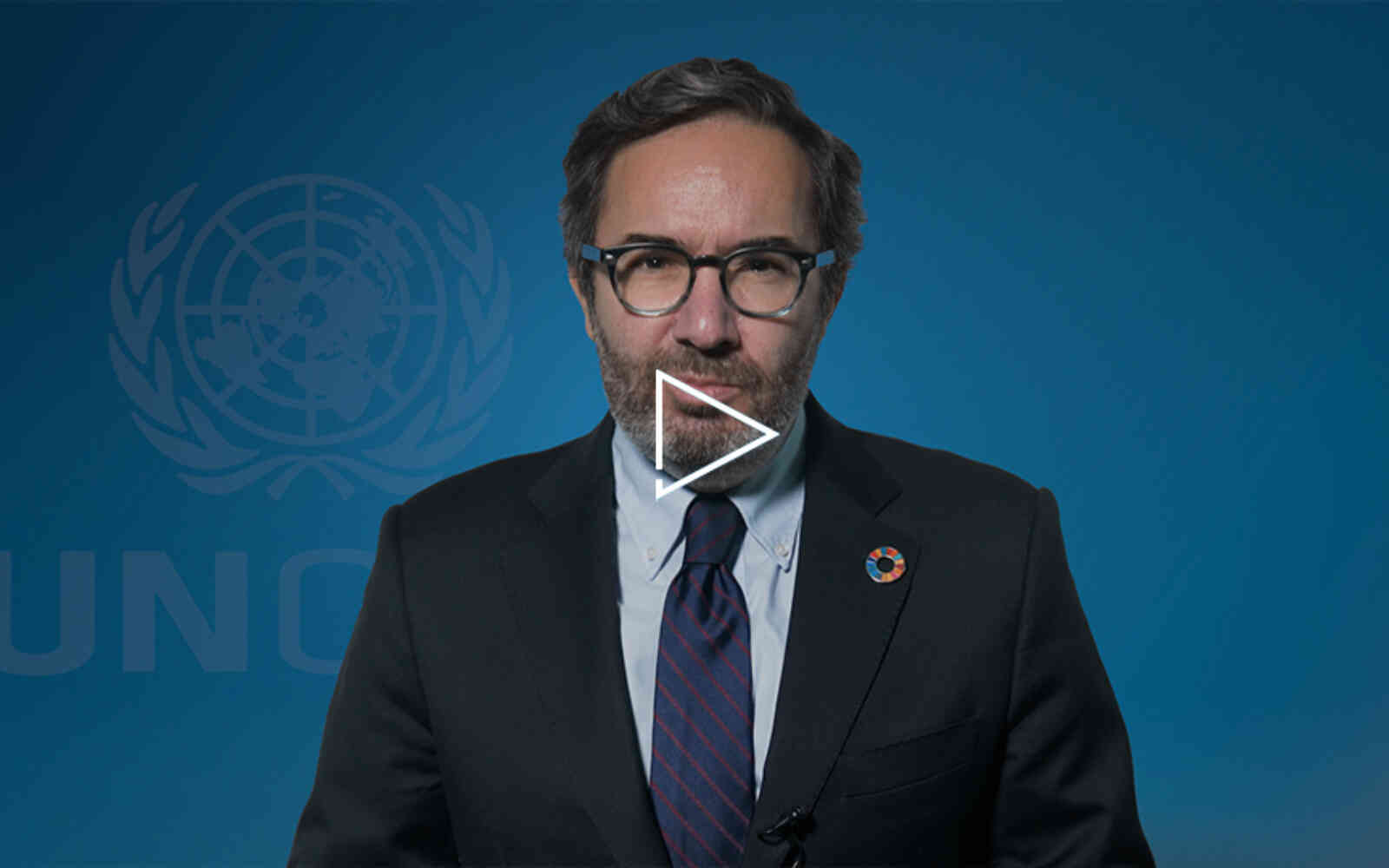The United Nations Office for Project Services (UNOPS)

How can data make mine action better?
Data tells a complex story of an indiscriminate opponent – mines and other explosive ordnance. But new innovations are helping us better understand them.
- Photo: ©UNMAS
Almost every hour, mines and explosive remnants of war claim a new casualty – around 80 per cent are civilians. Worldwide, there are over 100 million active landmines across more than 55 countries. In Cambodia, most minefields are in rural areas – and the majority of casualties occur when people are preparing ground for farming or other development activities. Accurate data can help reduce these.
It shows where the ground is safe – and where it isn't. It reveals information about terrain, clearance sites or risk education – who is being educated, where and how. It can help save someone’s life – not just from mines, but because mine action can impact many aspects of someone’s life. Data can map safe transportation routes for critical aid. It can help reduce accident numbers by advising which farmlands are cleared to cultivate – or which schools or hospitals are safe to walk to.
The more data, the clearer the picture – the better the response. But while information management has long been a function of mine action, collecting, analyzing and sharing data has been a historically challenging process. Slow, little or no internet access in field locations, manual data entry, differing in-country systems and a lack of collaborative tools, have all limited its potential.
This is changing.
Digitalized data collection processes, combined with analytics, means the wide gap that once existed between idea – and implementation – is narrowing.
Technology is finally catching up, sparking important questions: How can these new information management tools be used to improve and enhance mine action’s impact? And, what processes can be adapted to not just do something different, but better?
To answer these questions, UNOPS Peace and Security Cluster worked with the Geneva Centre for International Humanitarian Demining and the UN Mine Action Service (UNMAS), embarking on a review of the latest tools, techniques and potential benefits for UNMAS field programmes. The result: a global information management system – and a fundamental shift in how we collect, analyze and use data.
Linking local and global
Context is paramount. In Somalia, for example, 150 reports on risk education are collected and processed by the UNMAS team weekly. Previously, these were submitted via email and manually validated – a process that took around 75 hours per week. But by introducing digital, optimized processes including automated validation rules, it now takes 25 hours. That’s 50 hours saved each week, which can be focused on supporting the programme with using data rather than entering it. Using data for more effective training of troops from the African Union Mission in Somalia; identification of explosive hazards; assessments of villages and supply routes; risk education; and verification of vehicles, luggage and buildings using explosive detection dogs.
Data is more than just efficiency.
With standardized data, we can build tools that visualize and compare field programmes worldwide. When combined with processes tailored to each programme this enables a system robust enough to integrate global data, but, at the same time, flexible enough to be adapted to each country’s unique needs. By doing this, we can create a complete picture – and adjust our actions accordingly.
Analytics can help identify and predict patterns based on historical data: for example, how explosive hazards are evolving and where possible new hazards will be found. Something that’s crucial in a sector where new threats gain speed rapidly – and have the potential to kill quickly.
What’s more, that data from Somalia can also be overlayed and combined with information from other countries like South Sudan or Nigeria – drawing on lessons and insights from different contexts. By integrating monitoring and evaluation mechanisms we can dig deeper into the why, making sure we’re asking the right questions. For example, are we prioritizing tasks in line with intended goals? Could a regional approach be more effective than a country-based approach? Which activities should donors fund to maximize impact?
This new system means relevant data is processed faster. And more data means UNMAS teams can act – and adapt – quicker than ever before. Ultimately putting us closer to our goal: safer communities – and a world free from the threat of mines.
Cameron Smith
Cameron Smith is the former Global Information Management and Analytics Advisor for UNOPS Peace and Security Cluster (PSC). He has worked with UNOPS for 14 years in legal, project management and technology-related roles. Based in Geneva, Switzerland, his focus is on leading initiatives aimed at enabling PSC and their partners to enhance analysis, demonstrate impact and facilitate decision making.













